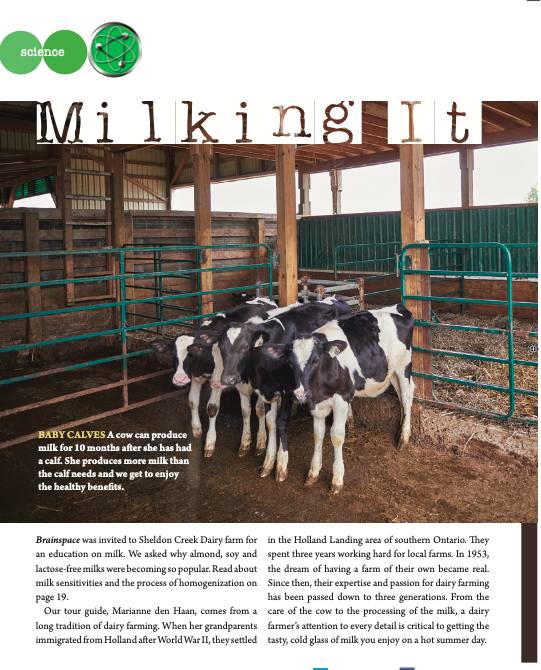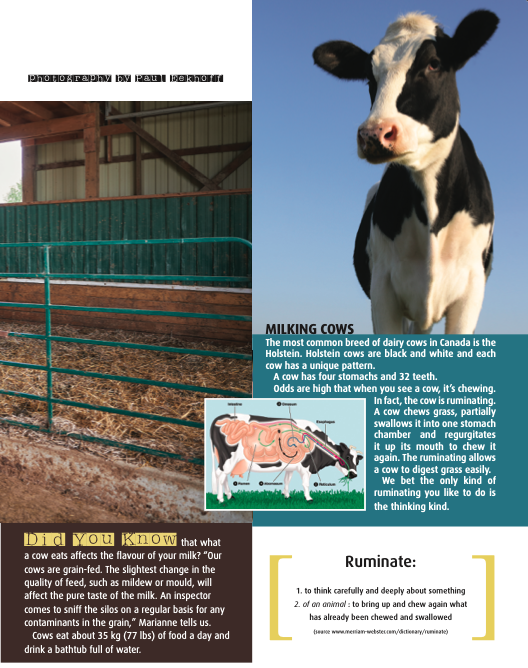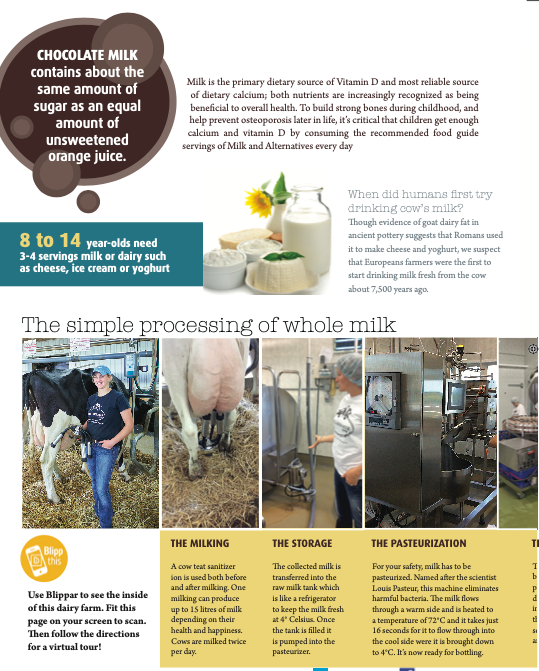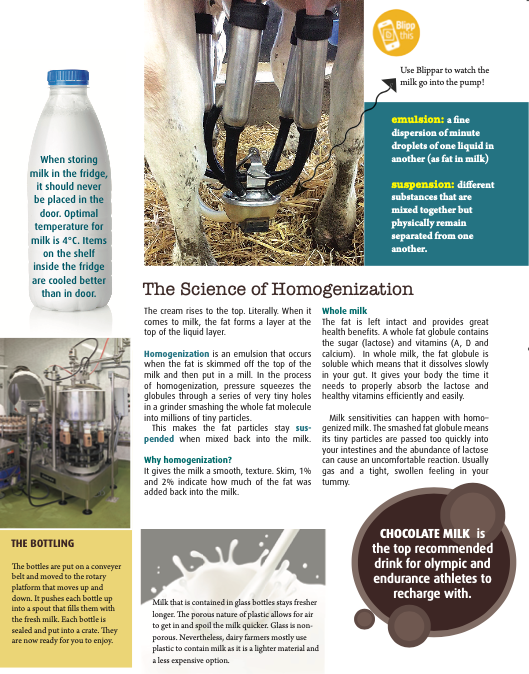




Milking it
Brainspace was invited to Sheldon Creek Dairy farm for an education on milk. We asked why almond, soy and lactose-free milks were becoming so popular. Read about milk sensitivities and the process of homogenization on the images above.
Our tour guide, Marianne den Haan, comes from a long tradition of dairy farming. When her grandparents immigrated from Holland after World War II, they settled in the Holland Landing area of southern Ontario. They spent three years working hard for local farms. In 1953, the dream of having a farm of their own became real. Since then, their expertise and passion for dairy farming has been passed down to three generations. From the care of the cow to the processing of the milk, a dairy farmer’s attention to every detail is critical to getting the tasty, cold glass of milk you enjoy on a hot summer day.
Did You Know?
A cow can produce milk for 10 months after she has had a calf. She produces more milk than the calf needs and we get to enjoy the healthy benefits.
Milking Cows
The most common breed of dairy cows in Canada is the Holstein. Holstein cows are black and white and each cow has a unique pattern.
A cow has four stomachs and 32 teeth. Odds are high that when you see a cow, it’s chewing.
In fact, the cow is ruminating. A cow chews grass, partially swallows it into one stomach chamber and regurgitates it up its mouth to chew it again. The ruminating allows a cow to digest grass easily.
We bet the only kind of ruminating you like to do is the thinking kind.
Did you know that what a cow eats affects the flavour of your milk? “Our cows are grain-fed. The slightest change in the quality of feed, such as mildew or mould, will affect the pure taste of the milk. An inspector comes to sniff the silos on a regular basis for any contaminants in the grain,” Marianne tells us.
Cows eat about 35 kg (77 lbs) of food a day and drink a bathtub full of water.
Milk is the primary dietary source of Vitamin D and most reliable source of dietary calcium; both nutrients are increasingly recognized as being beneficial to overall health. To build strong bones during childhood, and help prevent osteoporosis later in life, it’s critical that children get enough calcium and vitamin D by consuming the recommended food guide servings of Milk and Alternatives every day.
When did humans first try drinking cow’s milk? Though evidence of goat dairy fat in ancient pottery suggests that Romans used it to make cheese and yoghurt, we suspect that Europeans farmers were the first to start drinking milk fresh from the cow about 7,500 years ago.
The Simple Processing of Whole Milk
The Milking
A cow teat sanitizer ion is used both before and after milking. One milking can produce up to 15 litres of milk depending on their health and happiness. Cows are milked twice per day.
The Storage
The collected milk is transferred into the raw milk tank which is like a refrigerator to keep the milk fresh at 4° Celsius. Once the tank is filled it is pumped into the pasteurizer.
The Pasteurization
or your safety, milk has to be pasteurized. Named after the scientist Louis Pasteur, this machine eliminates harmful bacteria. The milk flows through a warm side and is heated to a temperature of 72°C and it takes just 16 seconds for it to flow through into the cool side were it is brought down to 4°C. It’s now ready for bottling.
The Bottling
The bottles are put on a conveyor belt and moved to the rotary platform that moves up and down. It pushes each bottle up into a spout that fills them with the fresh milk. Each bottle is sealed and put into a crate. They are now ready for you to enjoy.
The Science of Homogenization
The cream rises to the top. Literally. When it comes to milk, the fat forms a layer at the top of the liquid layer.
Homogenization is an emulsion that occurs when the fat is skimmed off the top of the milk and then put in a mill. In the process of homogenization, pressure squeezes the globules through a series of very tiny holes in a grinder smashing the whole fat molecule into millions of tiny particles.
This makes the fat particles stay suspended when mixed back into the milk.
Why homogenization? It gives the milk a smooth, texture. Skim, 1% and 2% indicate how much of the fat was added back into the milk.
Whole milk
The fat is left intact and provides great health benefits. A whole fat globule contains the sugar (lactose) and vitamins (A, D and calcium). In whole milk, the fat globule is soluble which means that it dissolves slowly in your gut. It gives your body the time it needs to properly absorb the lactose and healthy vitamins efficiently and easily.
Milk sensitivities can happen with homogenized milk. The smashed fat globule means its tiny particles are passed too quickly into your intestines and the abundance of lactose can cause an uncomfortable reaction. Usually gas and a tight, swollen feeling in your tummy.
Milk that is contained in glass bottles stays fresher longer. The porous nature of plastic allows for air to get in and spoil the milk quicker. Glass is non- porous. Nevertheless, dairy farmers mostly use plastic to contain milk as it is a lighter material and a less expensive option.
